Home » Viewpoints » Crafting a thought process....
Crafting a thought process....
By Nabamita Chatterjee | January 15, 2014
figments.inc is an experience design studio which specialises in sculpting brand environments. VM&RD chats up with Experience Designer Jasleen Manrao, Co-Founder and Creative Head to know more about her journey and the creative philosophy that drives her to create innovative project each time for her clients.
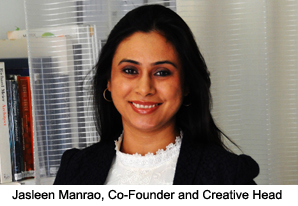 Could you first give us a brief background about your journey as a retail designer so far?
Could you first give us a brief background about your journey as a retail designer so far?An architect by initial training, I went on to specialize in the design of lifestyle products and accessories at NID. While designing products, I found a huge gap in the way products were conceived on the drawing board and the way they were perceived by the customers. Back in those days, visual merchandising essentially meant props and holders and retail design was a logical extension of interior space planning.
I could somehow instinctively connect with the inherent needs of a product. This allowed me to graduate from'designing products' to'designing for products'. The initial projects were well received and I was fortunate to meet like-minded people, who form the core-team in the studio today. One thing led to another and soon we were dabbling in varied format of retail: exhibitions, display, visual merchandising, stores, shop-in-stores etc.
Soon designing meaningful experiences became an agenda and all forms of transactional spaces became our play-field. Over the years, the studio attracted professionals from diverse backgrounds and the studio became a melting pot for specialization.
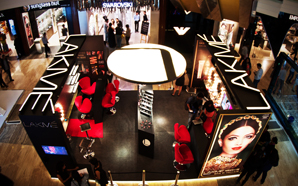 Could you throw some light on the design philosophies of figments.Inc? How would you define your USP and value additions in terms of the project you handle for your clients?
Could you throw some light on the design philosophies of figments.Inc? How would you define your USP and value additions in terms of the project you handle for your clients?figments.inc is essentially an experience design studio which strives towards sculpting brand environments.'Environment' and'Experience' are two words that structure our effort.'Design' is the sole tool.
Experience design is a craft that borrows its existence from three fields design, business and sustainability. Experiences matter more when they are meaningful towards the target audience. The discipline is still in its infancy, especially in the Indian context; however the scope for its application is vast.
Our process is our USP. When we work on designing a transactional environment, we start as fresh recruits. We spend a long time observing customer behavior, in order to gain insights. Through our research we try to establish the value systems the target group has and what are the meaningful experiences the customer group will value. These insights not only go on to define the brief, but also helps reinforce context immersion, dilution of opinions and in-turn transforming clients into stake-holders.
We design spaces through mapping and creating touch-points, focusing of creating the experiences. Touch points are the essential nodes in the customer journey that relay the brand promise. The nodes are designed in a manner that when customers engage with them, unique memory-triggers are created. Such is the power of the human mind, that the triggers when evoked can make us re-live the entire experience in another time and space. This creates ever-lasting brand loyalty.
Do you have role models in your design and creative philosophies?
I don't have role models as such. I must add, I have always found great teachers in the craftsmen on-site. I also keenly observe the work by the young designers.
Speaking of creative philosophies, the work of Joseph Pine, James Gilmore, Nathan Shedroff, Geert Hofstede has been inspirational. In the Indian context, Devdutt Pattanaik has been bringing forth interesting arguments that connect us back to our mythological construct.
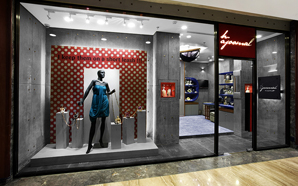 What is the unique skill or competence that you would attribute your success to?
What is the unique skill or competence that you would attribute your success to?I would say interpretation of'diversity and balance' is something that is unique to our work. Growing up in various army cantonments across the country, appreciation of diversity is something which got inculcated in me at the formative stage of my life.
There are various forms in which the trait reveals itself.
In every experience that we create, we look at four'rasas': engagement, education, aesthetic, entertainment. The blend varies as per the degree of participation. This is one level of handling diversity.
At another level, given my exposure to unconventional processes, as an accessory designer, I try and bring together diverse materials in every project. This in turn calls for fine balance in detailing.
In one of our projects for a brand that sells solitaires, as a response to various constrains we decided to do display props employing discarded PVC plumbing pipes. The material palette for each prop included PVC, Wood, Cloth, Metal, Paint and Paper.
Finally the studio is a multi-disciplinary entity. In every project there are sets of tangibles and intangibles. At the tangible level there is space planning, product presentation, communication, lighting etc. The intangible aspects contain elements like atmospherics, multi-sensorial design, tonality, real-virtual interface. While crafting an experience for an environment we need to blend tastefully these diverse elements.
Any favorite aspects of retail designing you would like to mention? Rather, which is the most challenging to you?
The challenge for us in retail design is to go beyond the obvious aspects of retail design and deliver an integrated experience solution for a brand. That is the tough part! Having said that, I personally enjoy the scope of customization in retail. Every project has a unique aesthetic construct. Various factors like brand key, merchandise design, offering collections, consumer category dictate how the construct gets shaped. In order to complete the construct, we custom design elements like handles, lighting fixtures, chairs are created. I must admit though, given the timelines and commercial constrains that the retail industry imposes, it becomes a challenge to realize research and product development cycles for a custom-made design.The challenge amplifies when customization has to be scalable to larger, multilevel platform for national roll outs!
God lies in the details; it holds true for retail design.
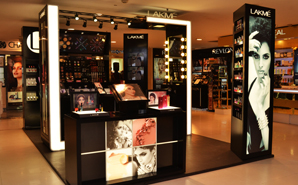 Any retail or branding project that you would regard as your biggest achievement or a milestone in your career?
Any retail or branding project that you would regard as your biggest achievement or a milestone in your career?We were approached by Lakme to design a flagship experience for them - the ideal environment in which the brand and its product would meet the patron.
Brand Lakme is undergoing a calibrated metamorphosis, thanks to its visionary leadership team. After various studies and deliberations, it was agreed that a back-stage experience would most ideally convey the brand promise. Lakme has its presence across four formats- Colors, Skin-Care, Salon and the Fashion Week. The formats are so diverse that it's difficult to weave them together, something or the other would be out of place. However, the back-stage experience made it all come together effortlessly.
We assumed a model space for the concept and developed the idea. Specialized services were developed for the flagship experience. An iconicity manual was developed which duly documented elements which would trigger memories of Lakme in the consumer's mind.
While the hunt for the actual space closest to the assumed property was on, we did real life interpretations based on the manual. These included a full-service flagship Salon, In-Store Shop for Colours and Skin-care, Shop-in-Shops and Fusion Outlets. The interpretations also included temporary spaces like the Lounge at Lakmé Fashion Week and a pop-up for Vogue Fashion Night-out.
Designing an experience and developing interpretations of the same at such varied scales has been very satisfying. The work on the flagship is starting now, but the elements constituting the experience are already performing on the trade floor.
What do you think are the advantages and challenges in the scope of growth when it comes to Indian experience design scenario?
Experience Design for retail in the Indian context is a nascent field and takes a lot of explanation, so much so that sometimes I cannot introduce myself in one line!
Experience Design is often seen as a tool for digital media and interaction design, while others do see it in the real world evolving diverse disciplines such as branding, interiors, retails, marketing, multimedia, product, pricing etc. Its vagueness therefore is attributed to its vastness.
Adding complexity to vagueness, there are many dimensions and parameters to designing of experiences, for example, duration, engagement, interaction etc. All the parameters make experiences a very measurable and designable exercise.
However there are distinct advantages of working this out in India. Our societal structure is very experience based. Myths, rituals and traditions are all based on creating experiences and triggers that get passed on to future generations. In our day-to-day lives, we are subjected to a plethora of sensorial triggers, smell, taste, colour, touch. The vast pallet of existing triggers puts forth of choices when one is designing a controlled environment.
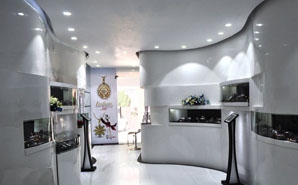 From the point of view of a Designer, what difference do you see between the retail design landscape in India and that with overseas? What do you think are the reasons for the same?
From the point of view of a Designer, what difference do you see between the retail design landscape in India and that with overseas? What do you think are the reasons for the same?Besides the cultural context that we just talked about, there are three distinct parameters that differentiate the Indian retail landscape for that overseas.
Public Conveniences: We maintain our homes beautifully, but litter on the street. We strive to make beautiful retail spaces in urban mess. Street-scape, Parking, Toilets, Corridors, Pause-points disturb the pace of designed experiences.
Human Conveniences: We are used to taking short-cuts to maintaining standards in internal planning. We want'A little-more' that what is ideal, in everything… People strive for'fitting' 10% extra covers in a fine-dining, two ATMS in a cubicle, three change-rooms where there is place for two! As a result, we end up compromising on privacy, comfort and in some cases dignity for the user.
Man versus Machine: Designers, especially in retail need to constantly remind themselves of the fact, India is essentially a hand-made territory. The craftsmen who work with mechanised tools have graduated from hand-crafting products. Thus even where machines are used, the mental process is that of hand-crafting products. As a result tolerances are high, precision is low. Detailing has to account for these inescapable realities.
What is your take on Visual Merchandising as an inseparable aspect of retail designing?
We spoke earlier about my journey from designing products to design for products. My belief is that the product is only as special as the environment that it meets its patron. No matter how much the patron has travelled to reach the product …it's the last ten inches that matter the most. In those ten inches, while many other products are trying to garner the client's attention, the product should be able to reveal its strengths, communicate its story and establish an eternal connect. Visual merchandising should not be an after-thought but should be connected with the product evolution.
In our studio, we have a design vertical called Comprehensive Display Strategy, wherein we undertake focused display strategies for products. Parameters like product attribute, display densities, perceived value, and accessibility are studied before formulating a strategy for display. We work closely with architect, interior designers, product development team and the marketing teams to formulate the approach. Mystery shoppers validate the approach
in-situ.
Thus for a renowned jewellery retailer in Bandra, Mumbai, we created display strategies and then went on to design the props, product densities, windows and lighting for an existing store. While in retail environments like Shop in space - for brand Lakmé we developed planograms and glorifiers simultaneously while the massing principles were being developed.
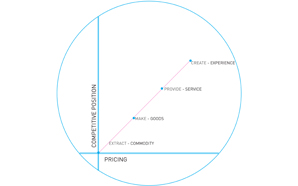 Where do you see the Indian Retail Design as well as VM Industry in the next 5-10 years?
Where do you see the Indian Retail Design as well as VM Industry in the next 5-10 years?There was a time when we bought commodities like grains for daily use; washed and ground them at home. Over the years we started buying finished goods like flour. Next came service, where the finished goods were delivered to our door-step and we could call on a toll-free number to register our dissatisfaction.
But today we have stepped into what can be labelled as an experience-economy. We're buying multi-grain flour with a composition that best compliments our health requirements. The grains are grown in a utopian setting where one can go and spend a weekend with their children. Pride of Cows, Green Tokri, Sula Vineyards are cases in point. (pic: experience graph)
The experience differentiations cover the entire spectrum from organic commodities to responsibly sourced diamonds!
In the next decade the retail industry, designers and brands alike, will have to complete the transition into the experience economy.
Any special or significant change you would want to make as a designer in the retail Branding Industry in the country?
Good Design is Good Business.
For us retail design is like working in a laboratory. You make certain changes in the composition and the results show in terms of foot-falls, pick/ try, inquire/ reserve and sales. The decisions we make in our studio immediately affects the decisions the consumers make on the shop floor.
At the industry level, I'd like us to move to the constant retail innovation model. A model where vital performance parameters are fed back to the design team and changes in the composition and presentation is made in real-time.
I'm also pained to see that many brands are staging experiences; trying to pull off a stunt every season in the hope to make it to the next, with good numbers. This works for the near-term, but erodes the brand equity over a period to time. Only experiences that are engrained into the basic fiber will last. I'd like the Retail Branding Industry to mature in this regard.
What has been your experience in finding, training and retaining talent in your field in India? What do you recommend to soften the challenge?
I like to think of our studio not as a space or a mere body of work, but a school of thought. A school of thought can only be built by people who imbibe the same values and passion for the craft. We work with people that have both!
I believe, studio-mates are stakeholders in the journey. There is never a wrong time to welcome a right person in the team. We are forever looking forward to meeting sensitive design thinkers.
As a skill set, we encourage passion, commitment and a sense of ownership. Education, backgrounds, experience and degrees are incidental and we do not base our criteria for selecting people based on these!
We also take internships and diploma projects very seriously. Training the new generation of designers is gratifying. A lot of students and fresher's come and go and we take a lot of pride in that.
In terms of retaining people, we don't really feel the heat as like-minded people believing in the same values and the cause of design, always stick around eventually!!
What do you think would be the impact of the recent FDI policy on the retail design market of India?
The earlier attitude on FDI kept some quality players out of the Indian market. But FDI is only one of the reasons.. There are many more. I'm not sure even after the FDI policy comes into play these players will be swarming to India. Having said that it is a big first step and will act as a catalyst in shaking the retail environment for good. It will push us into an experience economy faster than we would do otherwise.
What do you think will be the nature of competition from the international brands on the Indian retail houses post FDI?
The Indian retail market is huge. At least in the foreseeable future, there is enough for everybody. But except for a few retail houses, most Indian retail houses have force-fitted themselves to an established western model of retail. Over the years, some will make painful readjustments to perfectly fit into to the model. Others will need to go back to basics, find their strengths and re-invent themselves as Indian retail houses.
I do not believe things will change overnight given the FDI proposal. But definitely there is readjustment in store for all.
What is the dream that you would like to live as a designer?
Over the last few years, I have been teaching experience design at design schools like NID, SID and Pearl Academy. We are working on an experience design manual suited to the Indian way of thinking. I'd like mainstream education to embrace experience design as a dedicated discipline.
On another note, when an obvious answer to a question doesn't quite answer the question; its curiosity that prompts us to question the assumptions behind the answers. In many ways, curiosity propels us to innovate.
Time dulls curiosity … However I'd like us to remain forever-curious.
Advertisement
Related Viewpoints
Advertisement

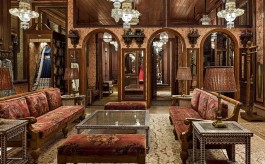
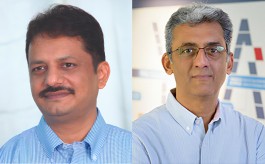






Comments